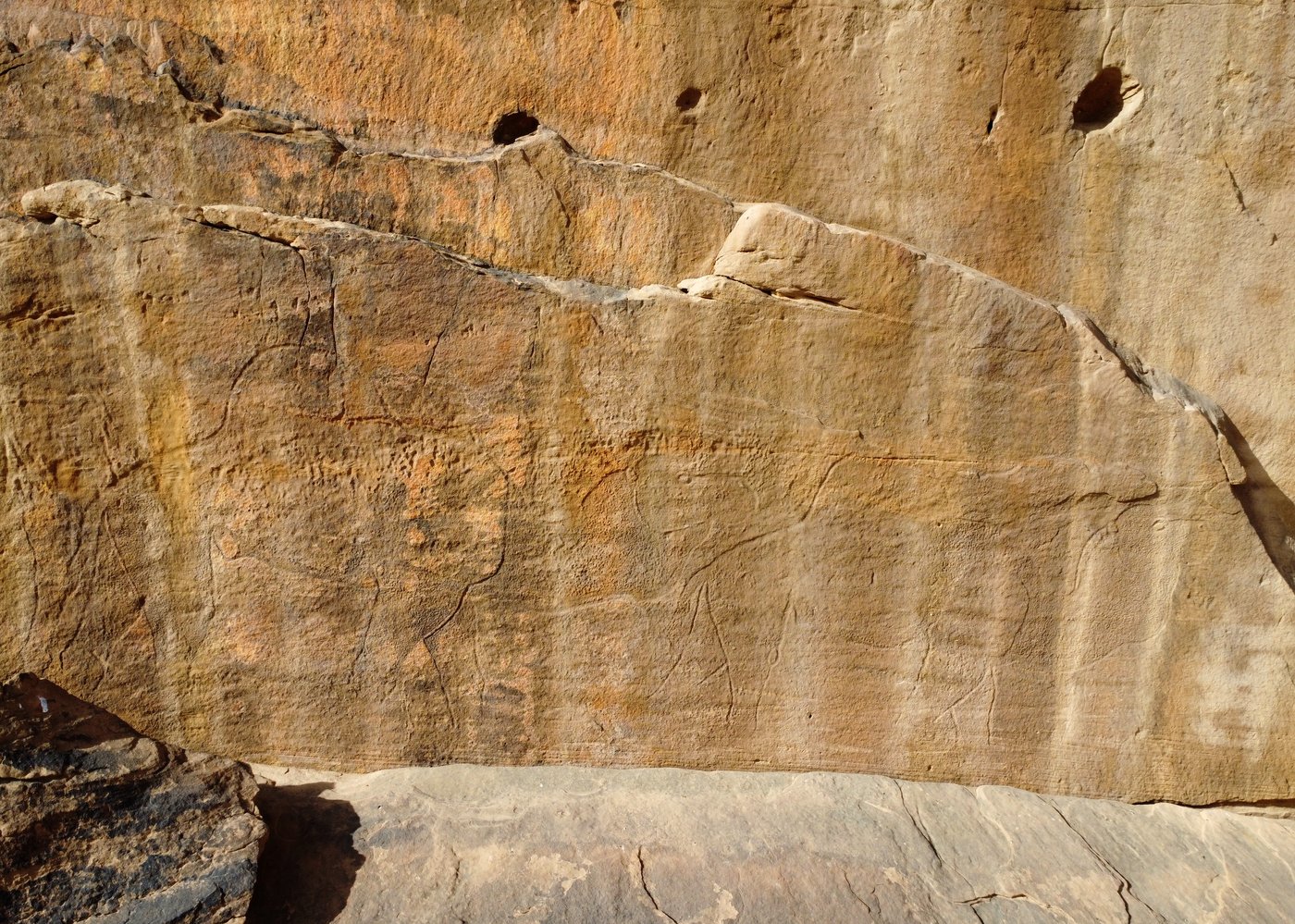Elevate your local knowledge
Sign up for the iNFOnews newsletter today!

NEW YORK (AP) — Researchers have discovered life-size rock carvings of camels, gazelles and other animals in the Saudi Arabian desert.
The carvings date back to around 12,000 years ago and many are over 6 feet (1.8 meters) tall. Scientists say they were created using a wedge-shaped rock to create sharp lines.
Several were etched on narrow ledges so the artists couldn’t even step back to survey the final product as they were working.
“To engrave that much detail with just a rock takes real skill,” said Maria Guagnin, an archaeologist with the Max Planck Institute of Geoanthropology in Germany who was involved in the discovery.
The animal carvings and engraving tools found at the site show that people were living in the area about 2,000 years earlier than scientists thought. It isn’t clear how they survived in such arid conditions — whether they lived off of shallow lakes that pooled for part of the year or drank water that accumulated in deep crevices.
People have been creating rock art in Saudi Arabia for thousands of years, Guagnin said. But older engravings can be tricky to date since they tend not to feature writing and there are few remnants such as charcoal, which can be sent to a lab for analysis.
“We know relatively little about art in the Middle East during this very ancient period of the human past,” Michael Harrower, a Johns Hopkins University archaeologist who wasn’t involved in the research, said in an email.
In the latest discovery, scientists found a rock pick buried in the landscape directly under the carvings, allowing them to date the tool and the art it was used to create. Their findings were published Tuesday in the journal Nature Communications.
Scientists weren’t sure if people lived in the desert during this time period since conditions were dry and water was thought to be scarce. They thought people may have moved in later, when the landscape was marked by greener pastures and lakes.
One of the carvings depicted an auroch, an ancestor of wild cattle that didn’t live in the desert and that went extinct. That made Guagnin wonder if the artists had encountered the animals by traveling somewhere else during the dry season.
“They must have been fully established communities that knew the landscape really well,” she said.
___
The Associated Press Health and Science Department receives support from the Howard Hughes Medical Institute’s Department of Science Education and the Robert Wood Johnson Foundation. The AP is solely responsible for all content.


Want to share your thoughts, add context, or connect with others in your community?
You must be logged in to post a comment.